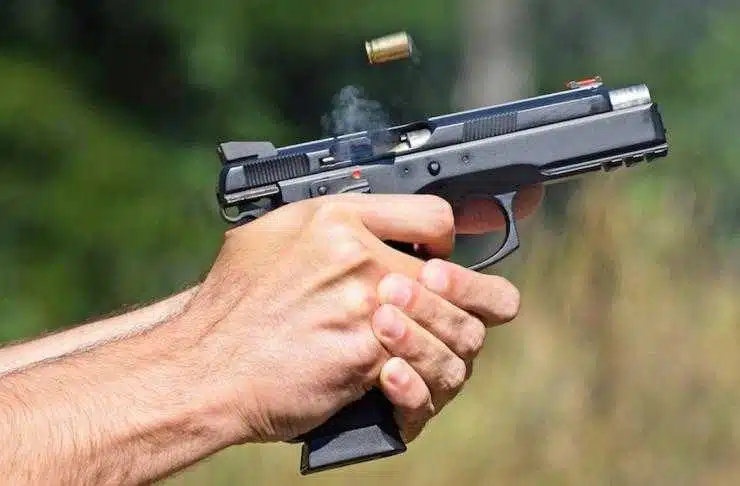For those new to shooting, recoil can be one of the most frustrating parts of firing a handgun. In addition to messing up your aim, recoil can often feel uncomfortable or surprising. However, you don’t have to let recoil get in the way of improving your shooting. The firearms safety and training experts from Gun Safety Training Pros, your premier choice when you’re ready to take a firearms safety course, offer a few tips that can help you better control recoil.
Pick the Right Equipment
You can start by choosing a handgun with less recoil. Most people assume this means picking the smallest, lightest gun possible. However, you actually get less recoil when you pick a heavier handgun in a smaller caliber. It’s also important to select a gun that has a full-sized grip. This allows you to get a full proper grip on the gun and makes it easier for you to manage recoil.
Work on Strengthening Your Grip
Getting the right equipment is a good place to start, but managing your grip can provide even more impressive results. The right grip can prevent recoil regardless of the handgun’s size. One of the most stable options is the thumbs-forward grip. This involves placing your nondominant hand over your dominant hand and holding your hand with your thumbs wrapped around the side of the gun and pointing forward. This creates a very stable grip without a gap for recoil to occur.
Pay Close Attention to Your Thumbs
Champion shooters emphasize the importance of focusing on what your thumbs are doing. Try to keep the dominant thumb resting on top of the other thumb and applying gentle downward pressure. This can reduce muzzle flip issues. Meanwhile, use your nondominant thumb to apply a little inward pressure to the gun. This can help with most shooters’ natural tendency to push the gun slightly toward their nondominant side when firing.
Don’t Lock Your Elbows
When trying to manage recoil, your first instinct might be to keep your arms as stiff and straight as possible. However, this is a problem because even the slightest bit of recoil causes you to flail out of your initial stance. A better option is shooting with your arms bent. This lets your elbows flex during recoil and absorb some of that extra motion. Though your arms might move a little, the recoil feels more comfortable, and you can easily transition back to your original aiming stance.
Choose a Stance You’re Comfortable With
The actual type of stance you have isn’t as important as you might think. Both keeping your feet squared to the target and putting your feet in line with the target can work well. The main thing is just getting a stance that works for you. When you’re in a stance that feels natural, solid, and reliable, you’re less likely to let recoil get in the way of a good shot.
Whether you’re new to handgun ownership or you’ve owned handguns for years, safety should always be your top priority. If you’d like to learn more about gun safety from experienced professionals by taking a high-quality gun safety course online, reach out to the experts at Gun Safety Training Pros. Contact us today at [email protected].



